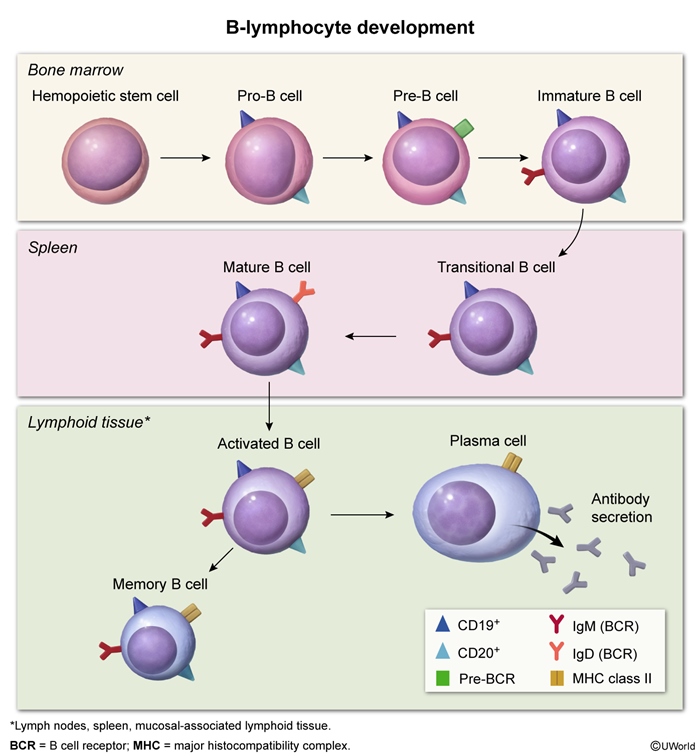Common Variable Immunodeficiency (CVID)
Article Sections
Introduction
Common variable immunodeficiency (CVID) is a primary immunodeficiency disorder characterized by impaired differentiation of mature B cells into plasma cells. Patients present in adolescence or early adulthood with recurrent respiratory and gastrointestinal infections due to hypogammaglobulinemia, and life-long immunoglobulin replacement therapy is required.
Pathogenesis
Normal B cell development begins in the bone marrow, where hematopoietic stem cells differentiate into immature B cells. Immature B cells migrate to peripheral lymphoid tissue (eg, spleen, lymph nodes) (Figure 1). Upon exposure to an antigen, immature B cells undergo activation, proliferation, and differentiation into plasma cells, as follows:
- In the absence of T cells, most mature B cells differentiate into short-lived plasma cells that produce antigen-specific IgM antibodies.
- In the presence of T cells, mature B cells undergo isotype switching (ie, immunoglobulin class switching (
Continue Learning with UWorld
Get the full Common Variable Immunodeficiency (CVID) article plus rich visuals, real-world cases, and in-depth insights from medical experts, all available through the UWorld Medical Library.
Figures
